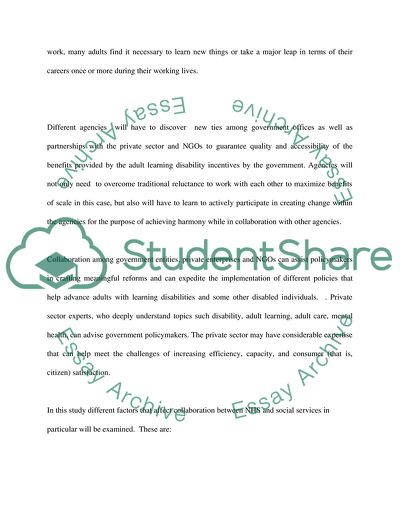Cite this document
(“Effective Collaboration and the Ideal Scenario Essay”, n.d.)
Effective Collaboration and the Ideal Scenario Essay. Retrieved from https://studentshare.org/miscellaneous/1547687-a-report-of-3000-words-which-critically-analyses-the-arrangements-for-multi-agency-and-or-multidisciplinary-working-in-a-named-area-adults-with-learning-dis
Effective Collaboration and the Ideal Scenario Essay. Retrieved from https://studentshare.org/miscellaneous/1547687-a-report-of-3000-words-which-critically-analyses-the-arrangements-for-multi-agency-and-or-multidisciplinary-working-in-a-named-area-adults-with-learning-dis
(Effective Collaboration and the Ideal Scenario Essay)
Effective Collaboration and the Ideal Scenario Essay. https://studentshare.org/miscellaneous/1547687-a-report-of-3000-words-which-critically-analyses-the-arrangements-for-multi-agency-and-or-multidisciplinary-working-in-a-named-area-adults-with-learning-dis.
Effective Collaboration and the Ideal Scenario Essay. https://studentshare.org/miscellaneous/1547687-a-report-of-3000-words-which-critically-analyses-the-arrangements-for-multi-agency-and-or-multidisciplinary-working-in-a-named-area-adults-with-learning-dis.
“Effective Collaboration and the Ideal Scenario Essay”, n.d. https://studentshare.org/miscellaneous/1547687-a-report-of-3000-words-which-critically-analyses-the-arrangements-for-multi-agency-and-or-multidisciplinary-working-in-a-named-area-adults-with-learning-dis.


